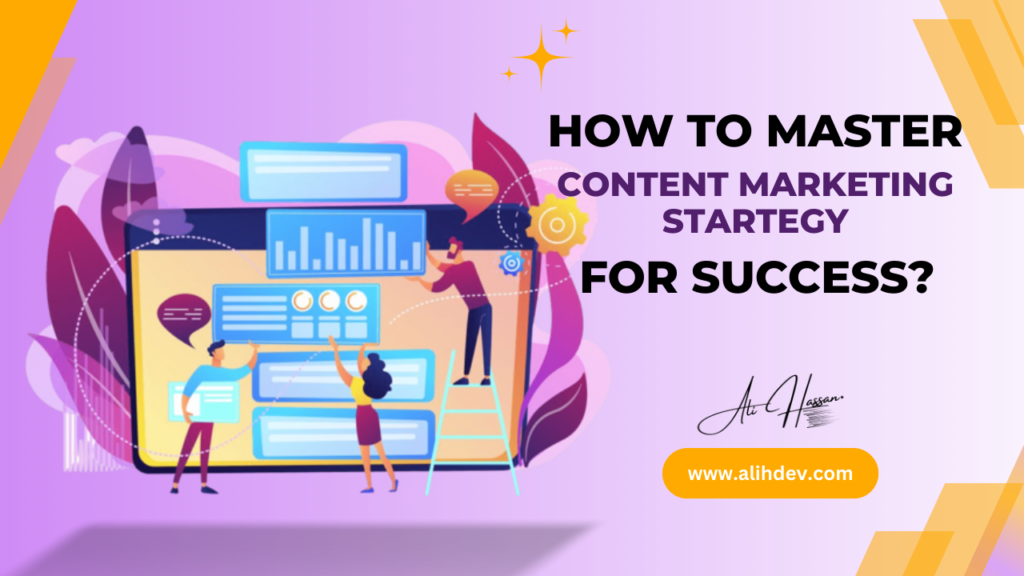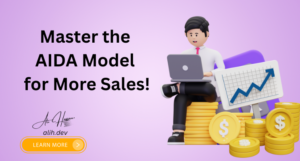
What is Content Marketing? 🎯
Content marketing is a tactical approach focused on creating, distributing, and promoting valuable, relevant, and consistent content to attract and retain a clearly defined audience. It aims to drive profitable customer actions like purchasing, subscribing, or interacting with a brand.
A successful content marketing strategy establishes customer trust and authority, helping them choose your brand over the competition.
Key Components of a Content Marketing Strategy:
A good content marketing strategy is essential for success. Let’s break it down step by step:
1. Set Clear Objectives 📂
Clear objectives form the basis of any successful strategy. What do you want your content to do? Common objectives include:
- Building brand awareness ✨ to reach a wider audience and gain more visibility.
- Driving traffic to your website by creating valuable content that ranks well in search engines.
- Generating leads and conversions to turn readers into customers and increase revenue.
- Providing value to improve customer loyalty and encourage repeat business.
For example, if you’re a small business, your objective might be to create blog posts that answer customer questions, positioning your brand as a helpful resource. Clear objectives guide your content marketing efforts like a roadmap, ensuring every piece of content contributes to your goals.
2. Understand Your Audience 🤼
Understanding your audience is key to crafting content that resonates. Build detailed buyer personas containing:
- Demographic data: Age, gender, location, and occupation.
- Interests and preferences: Which topics or trends do they follow?
- Pain points and challenges: What problems are they trying to solve?
- Buying behaviors: How do they research and make purchase decisions?
Let’s say your target audience includes young professionals. They would likely appreciate quick, bite-sized content such as infographics or short videos. By doing this, you create content targeted directly at your ideal customers.
3. Content Creation ✍️
Content is the heart of content marketing. Focus on creating material that is engaging, informative, and relevant. Here are some examples:
- Blog posts: Share actionable tips and insights about your industry. For example, a fitness brand could post, “10 Tips for Staying Fit While Working from Home.”
- Videos: Use tutorials, product demos, or explainer videos 🎥 to engage visually.
- Podcasts 🎙: Offer valuable discussions or interviews with industry experts.
- Infographics: Break down hard information into an easy-to-digest format.
- E-books and Whitepapers: In-depth guides to establish authority in your niche.
Don’t forget to keep a consistent tone and style throughout all of your content to reinforce your brand identity.
4. Choose the Right Content Channels 📢
Identify where your audience spends their time and distribute your content there. Top channels include:
- Social media: Platforms like Instagram, LinkedIn, or Twitter.
- Email newsletters 📬: Engage directly with your audience.
- SEO: Boost organic search traffic.
- Paid ads: Expand reach through sponsored content.
- Video platforms: Use YouTube or TikTok for visual storytelling 📱.
By diversifying your distribution channels, you increase your chances of reaching your audience where they are most active.
5. Measure and Analyze Performance 📊
Tracking performance helps you understand what works and what doesn’t. Use analytics tools to measure:
- Traffic: How many people are visiting your content?
- Engagement: Are readers commenting, sharing, or liking your content?
- Conversions: Are users signing up, purchasing, or taking desired actions?
- SEO rankings: How well is your content performing in search engines?
These insights allow you to fine-tune your strategy for maximum impact
6. Adjust and Optimize ⚽
Content marketing is an ongoing process. Refine your strategy using performance data to:
- Adjust the type of content you’re creating.
- Switch up platforms or channels.
- Alter the posting frequency.
Regular optimization ensures your content remains relevant and effective.
Content marketing isn’t about selling; it’s about building long-term relationships with your audience by delivering value. A well-executed strategy positions your brand as an industry leader, fosters trust, and drives sustainable growth.





